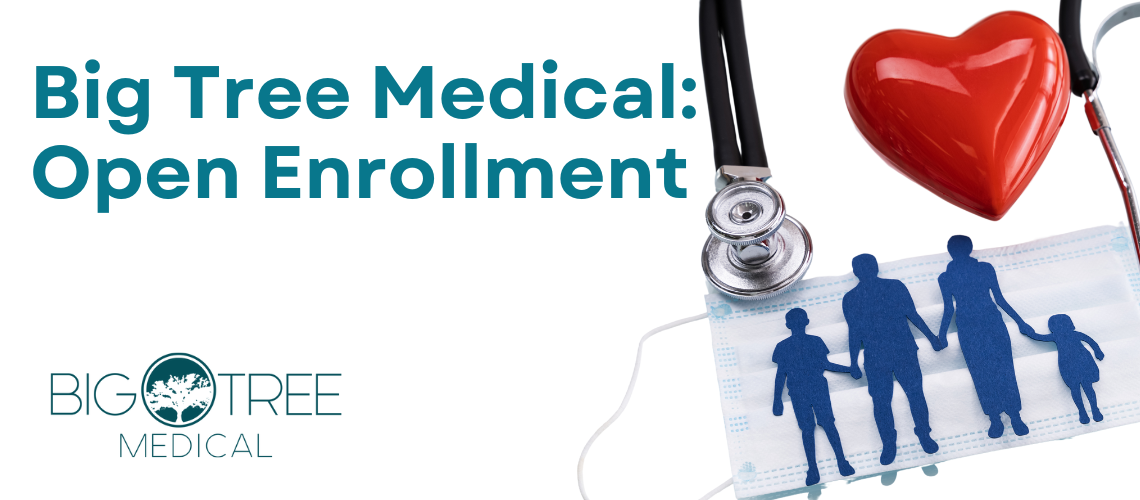
Big Tree Medical: Your partner through open enrollment
Open enrollment season is here, and as you begin to evaluate your health insurance options, consider how Big Tree Medical could improve your health care experience. With rising premiums, copays, and deductibles, managing your health can feel daunting almost like you can’t afford to get sick. If you’re not satisfied with your current health insurance, Big Tree Medical is here to be your ideal partner. We provide quick access to care when you need it most, all for a low, predictable cost that shields you from unpredictable and high expenses. Our transformative healthcare model Direct Primary Care (DPC) is at the heart of how we deliver superior care while lowering costs. Join us and be part of this innovative approach to health care.
What is Direct Primary Care (DPC)?
Direct Primary Care (DPC) is unlike the traditional model of primary care, where patients rely on insurance companies and fee-for-service billing. Instead, DPC practices typically run on a subscription model. Patients pay a flat monthly fee to be part of their provider’s care panel. In return, that fee covers in-person and virtual consultations, and often includes additional laboratory and clinical services at no extra cost.
One of the many benefits of DPC is the flexibility it offers. Big Tree Medical provides same-day or next-day appointments, flexible scheduling, and after-hours access to medical staff via text or video. DPC practices, like ours, offer substantial savings to patients while delivering greater access to and more time with their providers.
How DPC Benefits You
The Direct Primary Care (DPC) model empowers providers to prioritize comprehensive patient care. By removing the complexities and overhead associated with insurance companies and third-party payers, DPC providers can dedicate more quality time to each patient. At Big Tree Medical, patients typically enjoy extended visits, allowing our providers to explore health questions and concerns in depth. This approach fosters personalized care and thoughtful solutions tailored to your needs. Plus, with same-day access, telehealth options, and secure messaging, you can connect with your provider when it matters most.
Because Big Tree Medical runs on a simple monthly fee, there are no hidden costs, no co-pays, and no surprise bills. Your health is our priority, not paperwork or insurance claims. This streamlined approach allows us to focus on what really matters your well-being.
Because you have access to a provider who knows your, your health history and your life and goals, and you can access this provider when you want them (not when they think you should see them) we help reduce your costs - our patients get to check with us before they incur the costs of urgent care, emergency rooms or specialists. Often they find that they don’t need additional care.
Why Big Tree Medical is Growing
Our patient-first approach is driving Big Tree Medical’s rapid growth. In today’s healthcare landscape, many individuals feel frustrated by the impersonal and rushed nature of traditional healthcare. By adopting the DPC model, we’ve been able to offer a solution that is affordable, accessible, and focused entirely on the needs of our patients.
At Big Tree Medical, you’ll receive care that’s tailored to you. Our providers build real relationships with their patients, ensuring they understand your health journey and can provide the best possible care. Whether it’s chronic condition management, preventive care, or personalized weight loss and mental health services, we’re here to support you every step of the way.
Join Us at Big Tree Medical
During this open enrollment season, we invite you to experience healthcare the way it should be personal, comprehensive, and affordable. With open enrollment beginning on November 1, 2024, now is the perfect time to make the switch and join Big Tree Medical.
We would love to serve you at Big Tree Medical and look forward to helping you achieve your health goals with care that puts you first.



